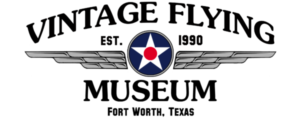Design and development
In 1941, the United States Army Air Corps ordered four examples of the Aeronca 65 TC Defender, designated YO-58, for evaluation of the suitability of light aircraft for observation and liaison purposes. (It also placed similar orders with Piper and Taylorcraft Aircraft). Service tests during the US Army’s annual maneuvers proved successful, and resulted in large orders being placed. In 1942, the O-58 was redesignated L-3
When American forces went into combat after Pearl Harbor, the Army Air Force used the L-3 in much the same manner as observation balloons were used during World War I — spotting activities and directing artillery fire. It was also used for liaison and transport duties and short-range reconnaissance which required airplanes to land and take off in short distances from unprepared landing strips. Liaison pilots would train on L-3s before moving on to front-line aircraft like the Piper L-4 or the Stinson L-5. Some L-3s were shipped to north Africa, and subsequently given to the Free French Forces in the area at the time. At least one of the aircraft served with US forces in Italy
Specifications (L-3C)
Data from Jane’s Fighting Aircraft of World War II.[40]
General characteristics
Crew: 2: pilot, observer
Length: 21 ft 10 in (6.67 m)
Wingspan: 35 ft 0 in (10.67 m)
Height: 9 ft 1 in (2.74 m)
Wing area: 169 ft² (15.6 m²)
Empty weight: 835 lb (379 kg)
Loaded weight: 1,260 lb (572 kg)
Powerplant: 1 × Continental O-170-3 OR a Continental O-65-8 flat-4 engine, 65 hp (48 kW)
Performance
Maximum speed: 87 mph (76 kn, 139 km/h)
Cruise speed: 79 mph (69 kn, 126 km/h)
Stall speed: 46 mph (40 kn, 73 km/h)
Range: 218 mi (189 nmi, 350 km)
Service ceiling: 10,000 ft (3,050 m)
Wing loading: 7.45 lb/ft² (36.1 kg/m²)
Power/mass: .051 hp/lb (85 W/kg)
